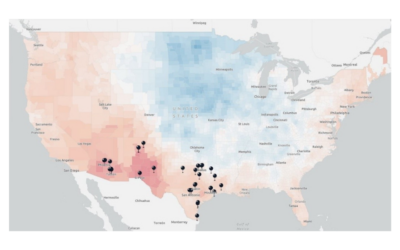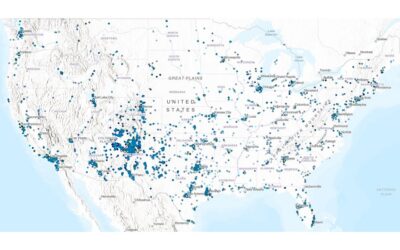UPDATE FOR MARCH 28, 2020: THIS PAGE IS NO LONGER BEING UPDATED. CLICK HERE FOR OUR MOST UP-TO-DATE INFORMATION
Zoo Advisors has been tracking the latest stimulus package—Coronavirus Aid, Relief, and Economic Security (CARES) Act 2020—and its potential impacts and opportunities for nonprofits and other business entities.
The bill provides direct economic relief for both individuals as well as businesses including nonprofit organizations. The stimulus will provide a tremendous influx of dollars into the economy to help minimize, as best as possible, the economic impact of the current crisis. Individual relief will come in the way of direct payments to taxpayers of up to $1,200. Increased unemployment compensation benefits, up to $600/week for four months, will be offered on top of what is typically provided through the states. There are also specific programs available for loans to nonprofits with forgiveness options.
Small Business Interruption Loans, through the Small Business Administration, will be available to cover employee salaries; payroll support, including paid sick, medical, or family leave, and costs related to the continuation of group healthcare benefits during those periods of leave; mortgage payments; rent; utilities; and any other debt obligations for a four month period.
-
Loan Amount—lesser of: the average total monthly payments by the applicant for payroll, mortgage payments, rent payments, and payments on any other debt obligations incurred x 4 or $10,000,000.
-
Loans can be deferred for a period of not less than 6 months, including payment of principal, interest, and fees, and not more than 1 year.
-
Applicable to businesses and nonprofits (501c3) with less than 500 employees.
Loan Forgiveness will be available and appears to incentivize employers to keep employees working through this crisis. Language in the bill states “an eligible recipient shall be eligible for forgiveness of indebtedness on a covered loan in an amount equal to the cost of maintaining payroll continuity during the covered period” and possibly other expenses including debt obligations, utilities, and rent.
-
Loan forgiveness may be reduced based on a ratio of number of employees employed during a period in 2019 (Feb to June) and then employed in 2020 (Jan to Feb); exclusions apply to employees with wages exceeding $100,000.
-
This loan forgiveness is specifically applicable to the SBI Loans mentioned above. In essence, portions of those loans which are utilized for their intended purposes are retroactively transformed into grants.
Deferral of payroll taxes—Payment of certain payroll taxes may be deferred to December 31, 2021 and December 31, 2022.
Refundable Payroll Tax Credit—Employers are eligible for a 50 percent refundable payroll tax credit on wages paid up to $10,000 during the crisis.
Charitable Deduction Expansion—a provision has been added for the 2020 tax year to allow for an above the line deduction of charitable deductions not to exceed $300 by qualified individuals to qualified nonprofit organizations. There may be some additional language added for other changes to charitable deductions.
Funding to States—The stimulus also provides extensive payments to states. It is unclear how these dollars will be spent but you should remain in contact with your local legislators to see what additional benefits may become available locally.
Click here to read the full text of the bill as of 3/25/20.
ACTIONS YOU CAN TAKE
While the House of Representatives is expected to pass the bill this Friday (3/27/20), there is some background work you can begin doing to take advantage of the benefits, particularly if you are interested in exploring the SBA loan.
-
Identify banks in your area, ideally ones that you or a board member already have a relationship with, who provide SBA loans. Government officials are saying that approval processes should happen quickly. Note: there are also emergency loans which are available with faster approvals (72 hours); although they may preclude getting the larger loans.
-
Pull together your necessary financial information, with a focus on payroll data, that would be required for any loan application, including all payroll costs, rents, utilities, and debt payments that would be incurred over the four months from March through June.
-
Review your upcoming payroll tax filings to identify potential cash flow relief available through deferred payment deadlines.
-
Once the language around the charitable deduction is finalized, create messaging to appeal to donors and how they can benefit from making a donation to support you during this time.
-
Communicate to your employees the individual relief that will be available to them through the direct rebates and how they will receive them. Also, if there have been layoffs, provide updates on the additional UC benefits that should become available.
To discuss in more detail how you can take advantage of the stimulus benefits, please reach out to us directly: David Walsh: dwalsh@canopysp.com or Zachary Winfield: zwinfield@canopysp.com.





